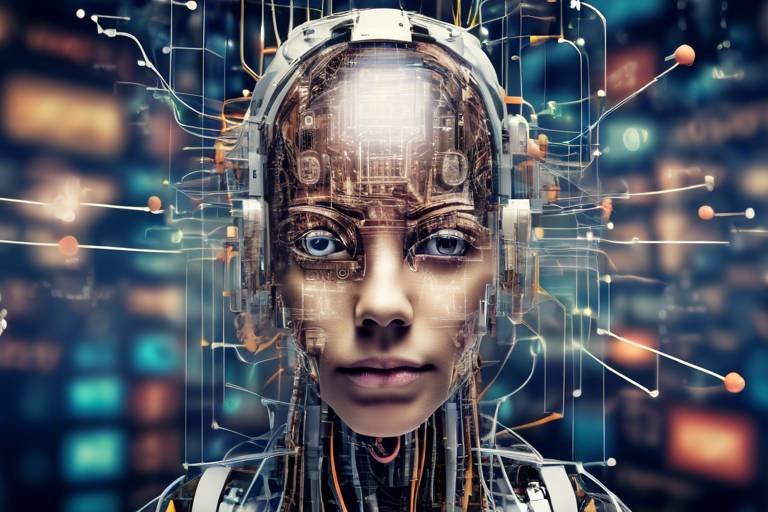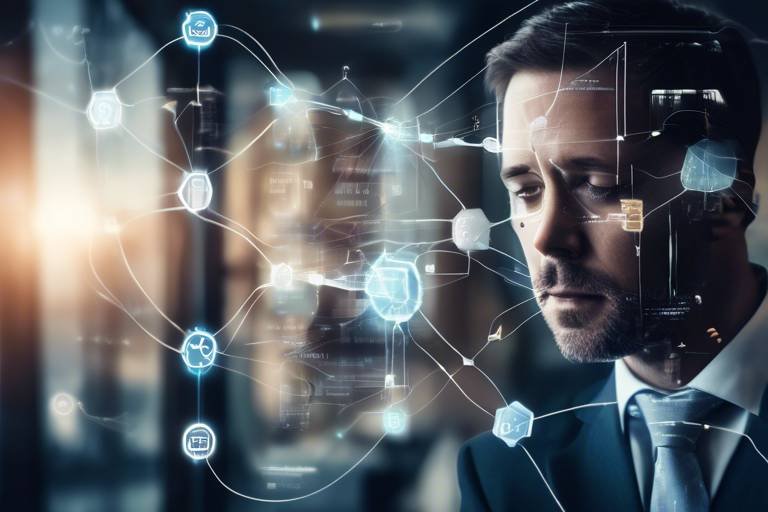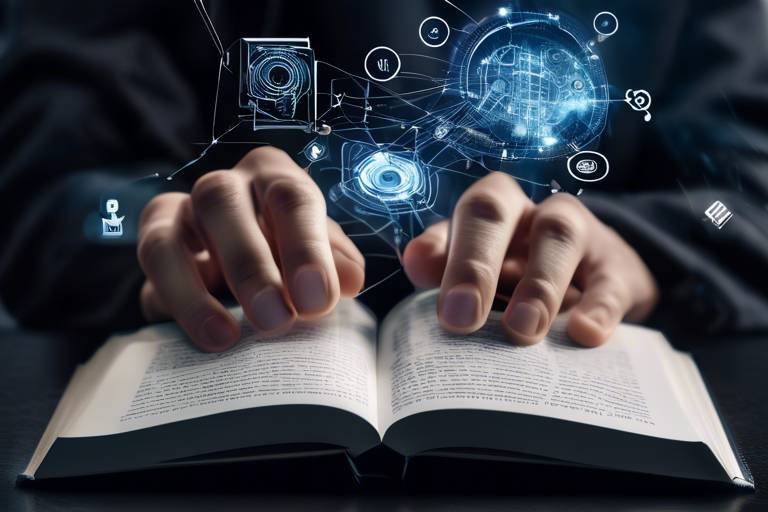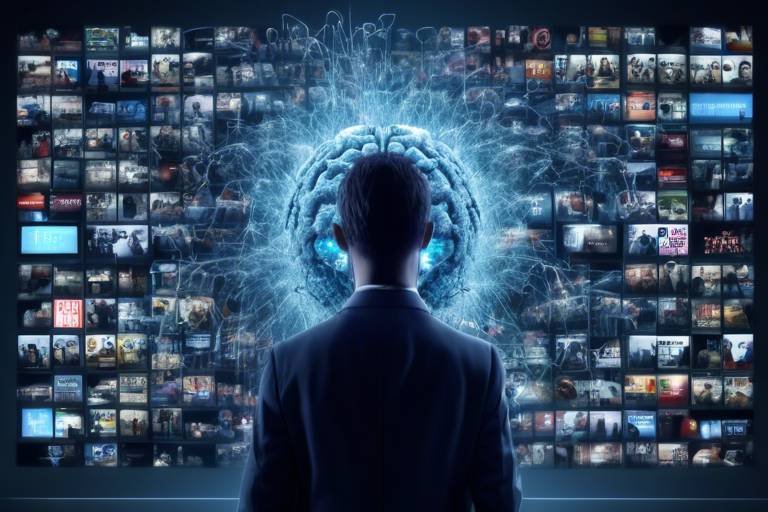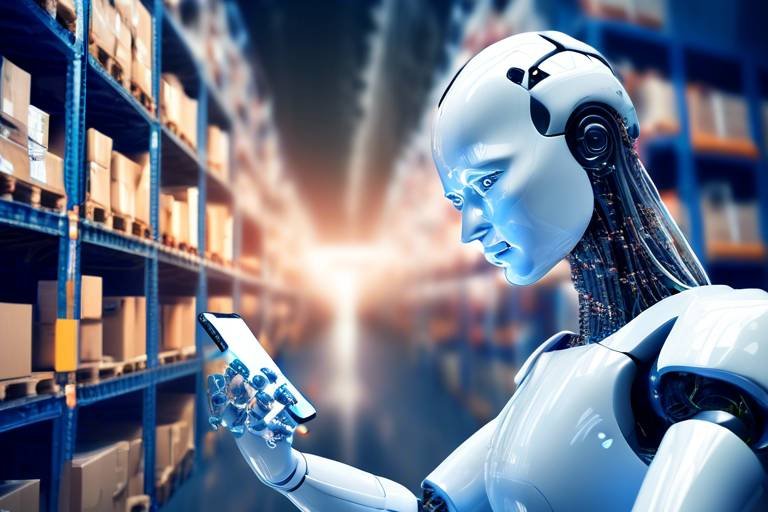AI and Machine Learning: Changing Education
In today's rapidly evolving world, artificial intelligence (AI) and machine learning (ML) are not just buzzwords; they are transformative forces reshaping the landscape of education. Imagine a classroom where every student receives personalized attention tailored to their unique learning styles and paces. This is no longer a distant dream but a reality made possible by AI and ML technologies. These innovations are revolutionizing how educators teach and how students learn, creating engaging and effective educational experiences.
AI is like a skilled personal tutor that understands each student's strengths and weaknesses, adjusting lessons accordingly. For instance, if a student struggles with algebra, AI can provide additional resources and exercises focused specifically on that topic. This targeted approach not only enhances understanding but also boosts confidence, making students more eager to participate in their learning journey.
Moreover, machine learning algorithms play a pivotal role in analyzing vast amounts of data generated by students. This data can reveal insightful patterns regarding performance, engagement, and even emotional responses to various teaching methods. Educators can leverage these insights to refine their strategies, ensuring that they meet the diverse needs of their classrooms. It's akin to having a crystal ball that helps teachers foresee challenges and adapt their approaches proactively.
But how do these technologies work in practice? Adaptive learning technologies, powered by machine learning, create dynamic educational experiences. They monitor student interactions in real-time and adjust the content accordingly. This means that if a student excels in a particular area, the system can present more challenging material, while simultaneously providing additional support to those who need it. This fluidity fosters an environment where every student can thrive, regardless of their starting point.
While the benefits of AI and ML in education are immense, it's essential to address the challenges that come with their implementation. For example, ensuring data privacy is paramount. As schools collect and analyze student data, robust security measures must be in place to protect sensitive information. Additionally, educators need training to effectively integrate these technologies into their teaching practices. Think of it as equipping teachers with the right tools to navigate a new and exciting landscape.
As we delve deeper into the realm of AI and machine learning in education, it becomes clear that these technologies are not just enhancing learning experiences; they are redefining the very essence of education itself. The future is bright, but it also requires careful consideration of ethical implications, ensuring that all students have fair access to these innovative resources. The journey has just begun, and the possibilities are endless.
- What is the primary benefit of AI in education? AI allows for personalized learning experiences, adapting to each student's unique needs.
- How does machine learning improve teaching strategies? By analyzing student data, machine learning identifies trends and patterns that help educators refine their teaching methods.
- What are the ethical concerns related to AI in education? Key concerns include data privacy, algorithmic bias, and ensuring equitable access to educational resources.
- Can AI replace teachers? No, AI is meant to assist educators, allowing them to focus more on teaching and less on administrative tasks.

The Role of AI in Personalized Learning
Imagine walking into a classroom where every student's learning experience is uniquely tailored just for them. Sounds like a dream, right? Well, thanks to artificial intelligence (AI), this dream is rapidly becoming a reality. Personalized learning is not just a buzzword; it’s a transformative approach that allows for educational content to be customized according to individual student needs, learning speeds, and preferences. With AI at the helm, engagement and retention are soaring to new heights.
So, how does AI achieve this remarkable feat? It starts with data. By analyzing vast amounts of information, AI can identify patterns in student behavior, preferences, and performance. For instance, if a student struggles with a specific math concept, AI can detect this through their interactions and adjust the curriculum accordingly. This means that instead of a one-size-fits-all approach, students receive a learning experience that resonates with their unique learning style.
Furthermore, AI can create dynamic assessments that adapt in real-time. Imagine taking a quiz that adjusts its difficulty based on how well you’re performing. If you’re breezing through the questions, the AI increases the challenge, keeping you engaged. Conversely, if you’re struggling, it simplifies the questions to help you grasp the concepts better. This continuous feedback loop not only enhances understanding but also boosts student confidence.
To illustrate the impact of AI in personalized learning, consider the following table that outlines key benefits:
| Benefit | Description |
|---|---|
| Tailored Learning Paths | Students receive customized content that meets their specific needs and learning pace. |
| Enhanced Engagement | Interactive and adaptive content keeps students motivated and interested in their studies. |
| Real-time Feedback | Students get immediate insights into their performance, allowing for quick adjustments in learning strategies. |
| Improved Retention | Personalized approaches lead to better understanding and retention of information. |
But it’s not just students who benefit from AI-driven personalized learning. Educators also gain valuable insights into their students’ progress. By harnessing data analytics, teachers can identify which students may need extra support and which teaching methods are most effective. This collaborative approach between AI and educators fosters a more inclusive and supportive learning environment.
In conclusion, the role of AI in personalized learning is nothing short of revolutionary. It empowers students to take charge of their education while providing teachers with the tools they need to facilitate effective learning experiences. As we continue to integrate AI into education, the possibilities for enhanced learning outcomes are limitless.

Machine Learning Algorithms in Education
The integration of machine learning algorithms into the education sector is nothing short of revolutionary. These algorithms are designed to analyze vast amounts of data, unlocking insights that were previously unimaginable. Imagine a teacher who has the ability to understand each student's learning style and performance metrics at a glance. This is the power of machine learning in education! By identifying patterns in student performance, educators can make informed decisions that enhance the overall learning experience. The algorithms sift through data such as test scores, attendance records, and even classroom interactions, allowing educators to tailor their teaching strategies to meet the unique needs of each student.
One of the most exciting aspects of machine learning in education is its ability to provide real-time feedback. For instance, if a student struggles with a particular concept, the algorithm can immediately flag this issue, prompting the teacher to intervene with targeted support. This level of responsiveness not only helps in addressing learning gaps but also fosters a more engaging and supportive environment for students. It's like having a personal tutor available 24/7, ready to assist whenever needed.
Moreover, machine learning can also help predict future performance. By analyzing historical data, algorithms can forecast which students may be at risk of falling behind. This predictive capability allows schools to implement proactive measures, such as additional tutoring or tailored resources, before issues escalate. The result? Students receive the support they need precisely when they need it, paving the way for improved outcomes.
To illustrate the impact of machine learning algorithms, consider the following table that highlights some common applications in education:
| Application | Description |
|---|---|
| Predictive Analytics | Analyzing student data to forecast future performance and identify at-risk students. |
| Personalized Learning Paths | Creating tailored learning experiences based on individual student needs and preferences. |
| Automated Grading | Using algorithms to evaluate assignments and provide instant feedback to students. |
| Content Recommendation | Suggesting additional resources or materials based on a student's learning history. |
As we delve deeper into the realm of machine learning, it's essential to recognize the importance of collaboration between educators and technology. While algorithms can provide valuable insights, the human touch remains irreplaceable. Teachers play a crucial role in interpreting data and understanding the emotional and social factors that influence learning. By combining the analytical power of machine learning with the empathy and intuition of educators, we can create a holistic approach to education that truly benefits every student.
In conclusion, machine learning algorithms are not just tools; they are transformative elements in the educational landscape. They empower educators to make data-driven decisions, enhance student engagement, and ultimately improve learning outcomes. As we continue to explore the potential of these technologies, one thing is clear: the future of education is bright, and machine learning is lighting the way.
- What are machine learning algorithms?
Machine learning algorithms are computational methods that allow systems to learn from data and improve their performance over time without being explicitly programmed.
- How does machine learning benefit education?
Machine learning benefits education by providing personalized learning experiences, predicting student performance, and automating administrative tasks, allowing educators to focus on teaching.
- Are there any challenges with using machine learning in education?
Yes, challenges include data privacy concerns, potential biases in algorithms, and the need for teacher training to effectively implement these technologies.

Adaptive Learning Technologies
Adaptive learning technologies are at the forefront of transforming the educational landscape. Imagine walking into a classroom where the lessons adapt to your unique learning style, pace, and preferences. Sounds like a dream, right? Well, it's becoming a reality thanks to the power of machine learning and artificial intelligence. These technologies analyze how students interact with content, adjusting the difficulty level and type of material presented in real-time. This means that if you're breezing through math problems, the system can present you with more challenging tasks, while someone who needs extra help can receive additional resources tailored just for them.
By leveraging data from various sources, adaptive learning platforms create a personalized educational experience that is not only effective but also engaging. For instance, when a student struggles with a particular concept, the system recognizes this and can offer supplementary materials, such as videos, quizzes, or interactive exercises, to reinforce understanding. This approach not only helps in mastering difficult subjects but also keeps students motivated and interested in their learning journey. The beauty of adaptive learning lies in its ability to cater to a diverse range of learners, ensuring that no one gets left behind.
To illustrate how adaptive learning technologies work, consider the following table that outlines the key components and benefits:
| Component | Description | Benefits |
|---|---|---|
| Real-Time Feedback | Instant assessments and feedback based on student performance. | Helps students understand their strengths and weaknesses immediately. |
| Customized Learning Paths | Individualized learning experiences based on each student's needs. | Increases engagement and retention by focusing on relevant material. |
| Data Analytics | Analyzes student data to identify patterns and trends. | Enables educators to make informed decisions about teaching strategies. |
Adaptive learning technologies are not just about making learning easier; they are about making it more effective. They allow educators to understand which teaching methods resonate best with their students, thus fostering an environment where everyone can thrive. However, like any technology, adaptive learning systems come with their own set of challenges. For instance, the implementation of these systems requires robust infrastructure and ongoing teacher training to ensure that the technology is used effectively. Nonetheless, the potential benefits far outweigh these hurdles, making adaptive learning a cornerstone of modern education.
- What is adaptive learning? Adaptive learning is an educational method that uses technology to tailor learning experiences to individual student needs, allowing for personalized and effective learning pathways.
- How does adaptive learning technology work? It analyzes student interactions with content in real-time, adjusting the educational material based on performance and engagement levels.
- What are the benefits of adaptive learning? Benefits include increased student motivation, improved academic performance, and the ability to address diverse learning styles.
- What challenges are associated with adaptive learning? Challenges include the need for teacher training, data privacy concerns, and the integration of adaptive systems into existing curricula.

Benefits of Adaptive Learning
This article explores how artificial intelligence and machine learning are revolutionizing the education sector, enhancing learning experiences, and providing personalized educational solutions for students and educators alike.
Personalized learning is becoming increasingly feasible with AI, allowing educational content to be tailored to individual student needs, learning speeds, and preferences, ultimately improving engagement and retention.
Machine learning algorithms analyze vast amounts of data to identify patterns in student performance, enabling educators to make informed decisions and adapt teaching strategies to enhance learning outcomes.
Adaptive learning technologies utilize machine learning to create dynamic educational experiences, adjusting content in real-time based on student interactions and performance, fostering a more effective learning environment.
Adaptive learning is not just a buzzword; it's a transformative approach that tailors education to fit individual students like a glove. Imagine a classroom where every student receives instruction that aligns perfectly with their unique learning style and pace. This personalized approach leads to several significant benefits:
- Increased Student Motivation: When students engage with material that resonates with them, their interest and enthusiasm for learning skyrocket. Adaptive learning platforms can present challenges that are just right—not too easy and not too hard—keeping students in that sweet spot of motivation.
- Improved Academic Performance: Research shows that when students learn at their own pace, they tend to perform better academically. By focusing on areas where they struggle and advancing through topics they grasp quickly, students can achieve mastery in subjects, leading to higher grades.
- Diverse Learning Styles: Every student learns differently. Some may be visual learners, while others are auditory or kinesthetic. Adaptive learning technologies can cater to these diverse styles, providing various content formats—videos, interactive simulations, or text—to ensure everyone has access to the best learning method for them.
Moreover, adaptive learning environments create a more inclusive atmosphere. Students who may have previously felt left behind due to traditional teaching methods can thrive when given the opportunity to learn in ways that suit them. This inclusivity not only boosts individual confidence but also fosters a sense of community in the classroom.
Despite its advantages, implementing adaptive learning technologies poses challenges such as ensuring data privacy, requiring teacher training, and integrating systems into existing curricula.
AI is streamlining administrative tasks in education, from grading assignments to scheduling classes, allowing educators to focus more on teaching and less on bureaucratic responsibilities.
As AI becomes more integrated into education, ethical considerations regarding data usage, bias in algorithms, and the potential for inequality must be addressed to ensure fair access to educational resources.
Addressing bias in AI systems is crucial to prevent perpetuating inequalities in education, requiring ongoing evaluation and adjustments to algorithms to ensure equitable outcomes for all students.
Ensuring data privacy is paramount in educational AI applications, necessitating robust security measures and transparent policies to protect sensitive student information while leveraging data for improved learning experiences.
Q: What is adaptive learning?
A: Adaptive learning is an educational method that uses technology to tailor learning experiences to individual students' needs, preferences, and performance levels.
Q: How does AI improve personalized learning?
A: AI analyzes student data to provide personalized content and resources, ensuring that each student receives the support they need to succeed.
Q: What are the challenges of implementing adaptive learning?
A: Some challenges include ensuring data privacy, the need for teacher training, and integrating new technologies into existing educational frameworks.

Challenges of Implementing Adaptive Learning
Implementing adaptive learning technologies in education is not without its challenges. While the potential benefits are enormous, the road to effective integration can be bumpy. One of the primary hurdles is ensuring data privacy. With the increasing reliance on digital platforms, sensitive student information is often collected and analyzed. Schools must establish robust security measures to protect this data from breaches. It's not just about compliance with regulations; it's about building trust with students and parents. After all, how can we expect learners to engage fully if they feel their privacy is at risk?
Another significant challenge is the need for teacher training. Many educators are already stretched thin, juggling lesson plans, grading, and classroom management. Introducing new technologies requires time and resources that may not be readily available. Teachers must not only understand how to use these adaptive learning tools but also how to interpret the data they generate to tailor their teaching approaches effectively. It's akin to asking a chef to whip up a gourmet meal without providing them with the right ingredients or tools.
Additionally, integrating adaptive learning systems into existing curricula can be a daunting task. Schools often have established frameworks that may not easily accommodate new technologies. This integration requires careful planning and collaboration among educators, administrators, and tech developers. If not executed well, it could lead to a disjointed learning experience for students. Imagine trying to fit a square peg into a round hole—frustrating and counterproductive!
Moreover, there is the challenge of ensuring equitable access to technology. Not all students have the same access to devices or reliable internet connections. This digital divide can exacerbate existing inequalities in education, leaving some students behind while others thrive. Schools must work diligently to provide all students with the resources they need to benefit from adaptive learning.
Lastly, the cost of implementation can be a significant barrier. While many adaptive learning technologies promise to enhance educational outcomes, the initial investment in software, hardware, and training can be substantial. Schools must weigh the potential long-term benefits against the immediate financial implications. It's a classic case of needing to spend money to make money, but in the context of education, it can feel like a gamble.
In conclusion, while adaptive learning technologies hold great promise, addressing these challenges is crucial for successful implementation. Schools must take a holistic approach, considering not only the technological aspects but also the human elements involved in the educational process.
- What is adaptive learning? Adaptive learning is a personalized educational approach that uses technology to adjust the learning experience based on individual student needs, preferences, and performance.
- How does AI enhance adaptive learning? AI analyzes data from student interactions to tailor content and learning paths, making education more responsive and effective.
- What are the main challenges of implementing adaptive learning? Challenges include data privacy concerns, the need for teacher training, integration into existing curricula, ensuring equitable access, and the costs associated with implementation.
- How can schools address the digital divide? Schools can provide resources such as devices and internet access to students in need, ensuring all learners can benefit from adaptive learning technologies.

AI in Administrative Tasks
Imagine a world where teachers can devote their time entirely to inspiring and educating students, rather than getting bogged down by endless paperwork and administrative duties. This is not just a dream; it is becoming a reality thanks to the integration of artificial intelligence (AI) in educational institutions. AI is revolutionizing the way administrative tasks are handled, making processes more efficient and allowing educators to focus on what truly matters—teaching.
From grading assignments to managing class schedules, AI-driven systems are taking over repetitive tasks that once consumed valuable time. For instance, AI can automatically grade multiple-choice tests and even essays, providing instant feedback to students. This not only saves educators hours of work but also ensures that grading is consistent and unbiased. Imagine a teacher who can receive detailed analytics on student performance, pinpointing areas where students struggle, all generated by AI algorithms in a matter of seconds. This level of insight allows educators to tailor their teaching strategies more effectively, enhancing the overall learning experience.
Furthermore, AI can assist in scheduling by analyzing various factors such as teacher availability, classroom space, and student needs to create optimal timetables. This reduces the administrative burden on staff and minimizes scheduling conflicts, creating a smoother operational flow within schools. Below is a table illustrating the key administrative tasks that AI can streamline:
| Administrative Task | AI Application | Benefits |
|---|---|---|
| Grading Assignments | Automated grading systems | Instant feedback, consistency, time-saving |
| Class Scheduling | AI scheduling algorithms | Optimized timetables, reduced conflicts |
| Attendance Tracking | Facial recognition and biometric systems | Accurate records, reduced manual input |
| Resource Allocation | Data analysis tools | Efficient use of resources, cost savings |
Additionally, AI can enhance communication between students, parents, and educators. Chatbots, powered by AI, can answer frequently asked questions, provide updates on student progress, and even assist with administrative inquiries. This not only improves communication but also ensures that everyone involved in the educational process remains informed and engaged.
Despite these advancements, the implementation of AI in administrative tasks does not come without challenges. Schools must invest in the necessary technology and training to ensure that staff can effectively utilize these tools. Moreover, there is a need for ongoing support and updates to keep the systems running smoothly. However, the potential benefits far outweigh the hurdles, paving the way for a more efficient educational environment.
In conclusion, the integration of AI in administrative tasks is transforming the educational landscape. By automating tedious processes, AI allows educators to focus on their primary goal: fostering a love for learning in their students. As technology continues to evolve, we can expect even greater innovations that will further enhance the educational experience.
- How does AI improve grading accuracy? AI systems can analyze student responses objectively, reducing human error and bias in grading.
- Can AI handle all administrative tasks? While AI can significantly streamline many tasks, human oversight is still necessary for complex decisions and interactions.
- What are the privacy concerns associated with AI in education? Ensuring data privacy is crucial; institutions must implement robust security measures to protect student information.
- How can schools prepare for AI implementation? Schools should invest in training for teachers and staff and ensure they have the necessary infrastructure to support AI technologies.

Ethical Considerations in AI Education
As we dive deeper into the integration of artificial intelligence (AI) in education, it becomes increasingly vital to address the ethical considerations that accompany this technological revolution. The potential of AI to transform learning experiences is immense, but with great power comes great responsibility. Educators, policymakers, and technology developers must work together to navigate the complexities surrounding data usage, algorithmic bias, and the overarching goal of ensuring equitable access to educational resources.
One of the primary concerns is the use of data. AI systems rely heavily on data to function effectively, and in the education sector, this data often includes sensitive information about students. It's crucial to establish transparent policies that govern how this data is collected, used, and shared. Students and parents should be informed about what data is being collected and how it will be utilized. Without clear communication, trust can erode, leaving students feeling vulnerable and exposed.
Additionally, the potential for bias in algorithms poses a significant ethical dilemma. AI systems are only as good as the data fed into them. If the training data reflects existing biases—whether related to race, gender, or socioeconomic status—these biases can be perpetuated in educational outcomes. This raises a critical question: how do we ensure that AI promotes equity rather than exacerbating existing inequalities? Continuous evaluation and adjustment of algorithms are necessary to mitigate these biases and ensure that all students benefit equally from AI-driven educational tools.
Moreover, the implementation of AI in education must consider the digital divide. Not all students have equal access to technology, which can lead to disparities in learning opportunities. It's essential to develop AI solutions that are accessible to all, regardless of their background. This might involve providing resources and training to underserved communities to ensure they can leverage AI for educational advancement. The goal should be to create an inclusive environment where every student has the tools they need to succeed.
Finally, ensuring data privacy is paramount. With the increasing amount of data being collected, educational institutions must implement robust security measures to protect sensitive information. This includes adopting best practices for data encryption, access controls, and regular audits to identify potential vulnerabilities. By prioritizing data security, educators can foster a safe learning environment where students can thrive without fear of their information being misused.
In summary, while AI holds immense potential to enhance education, it also presents significant ethical challenges that must be addressed. By focusing on transparency, equity, and privacy, we can harness the power of AI to create a more effective and inclusive educational landscape.
- What are the main ethical concerns regarding AI in education? The main concerns include data privacy, algorithmic bias, and ensuring equitable access to technology.
- How can we address bias in AI systems? Continuous evaluation and adjustment of algorithms, alongside diverse training data, are essential to mitigate bias.
- Why is data privacy important in educational AI? Protecting sensitive student information is crucial to maintaining trust and ensuring students' safety.
- What can be done to ensure equitable access to AI in education? Providing resources and training to underserved communities can help bridge the digital divide.

Addressing Bias in AI Systems
One of the most pressing challenges in the integration of artificial intelligence in education is the issue of bias. Bias in AI systems can lead to unfair treatment of students, perpetuating existing inequalities rather than alleviating them. Imagine a classroom where some students are consistently overlooked because the algorithms used to assess their performance are skewed. This is a reality that educators and technologists must confront. To effectively address bias, it's essential to understand its roots and implement strategies that foster equitable outcomes for all learners.
Bias can creep into AI systems in various ways, often originating from the data used to train these models. If the training data is not representative of the entire student population, the AI may develop a skewed understanding of student performance. For instance, if an AI system is predominantly trained on data from urban schools, it may not accurately reflect the needs and challenges faced by students in rural areas. This can lead to a lack of support for certain demographics, further widening the educational gap.
To combat bias effectively, ongoing evaluation and adjustments to algorithms are crucial. This involves a multi-faceted approach, including:
- Diverse Data Collection: Ensuring that the datasets used for training AI systems include a wide range of student backgrounds, learning styles, and educational environments.
- Regular Audits: Conducting frequent audits of AI systems to identify and rectify biased outcomes, ensuring that all students receive fair treatment.
- Stakeholder Involvement: Engaging educators, students, and parents in the development and evaluation of AI tools to gain insights into potential biases.
Furthermore, transparency is key. Developers should be open about how their algorithms function and the data they utilize. This transparency allows educators and stakeholders to understand the rationale behind AI decisions, fostering trust and ensuring accountability. By making the inner workings of AI systems clear, we can collectively work towards minimizing bias.
In summary, addressing bias in AI systems is not just a technical challenge; it's a moral imperative. By prioritizing fairness and equity in AI development, we can create a more inclusive educational landscape that truly benefits every student. The journey may be complex, but it is essential for paving the way toward a future where technology enhances learning for all, rather than hindering it.
- What is bias in AI systems? Bias in AI systems refers to the tendency of algorithms to produce unfair outcomes due to skewed data or flawed assumptions in their design.
- How can bias be addressed in educational AI? Bias can be addressed through diverse data collection, regular audits, and stakeholder involvement in the development of AI tools.
- Why is transparency important in AI? Transparency is important because it builds trust, allows for accountability, and helps stakeholders understand how AI decisions are made, which can mitigate bias.

Ensuring Data Privacy
In an age where technology reigns supreme, in educational settings has become more crucial than ever. As AI and machine learning systems collect and analyze vast amounts of student data, the potential for misuse or breaches increases. Educational institutions must prioritize the protection of sensitive information to maintain trust and integrity. Imagine a world where your personal learning habits, grades, and even social interactions are exposed; it’s a scenario that no student or educator wants to face.
To effectively safeguard student data, institutions need to implement robust security measures and establish clear, transparent policies. This involves not only technological solutions but also a cultural shift towards valuing privacy. Here are some essential strategies that can be employed:
- Data Encryption: Encrypting data ensures that even if unauthorized access occurs, the information remains unreadable.
- Access Controls: Limiting access to sensitive data based on roles helps to minimize the risk of exposure.
- Regular Audits: Conducting periodic audits of data handling practices can identify vulnerabilities before they are exploited.
- Privacy Policies: Clear and concise privacy policies should be communicated to students and parents to inform them about how their data is used and protected.
Moreover, educators and administrators must be trained to recognize the importance of data privacy. This training can empower them to make informed decisions regarding data handling and to foster a culture of privacy awareness within the institution. Just as we teach students about responsible digital citizenship, we must also educate staff on their responsibilities regarding data protection.
Another critical aspect of ensuring data privacy is compliance with regulatory standards, such as the Family Educational Rights and Privacy Act (FERPA) in the United States. Adhering to these regulations not only protects students but also shields institutions from potential legal repercussions. It’s a win-win situation that promotes a secure learning environment.
Ultimately, ensuring data privacy in education is not just about compliance; it’s about creating a safe space for students to learn and grow. By prioritizing privacy, educational institutions can foster trust, encourage open communication, and enhance the overall learning experience. As technology continues to evolve, so too must our approaches to data protection, ensuring that we stay one step ahead in safeguarding our students' futures.
1. Why is data privacy important in education?
Data privacy is essential in education because it protects sensitive information about students, such as grades and personal details, from unauthorized access and misuse. This protection fosters trust between students, parents, and educational institutions.
2. What measures can schools take to ensure data privacy?
Schools can implement data encryption, access controls, regular audits, and clear privacy policies to protect student information. Training for staff on data protection practices is also crucial.
3. How does AI impact data privacy in education?
AI can enhance learning experiences but also raises concerns about data privacy due to the large amount of personal information it processes. Schools must balance the benefits of AI with the need to protect student data.
4. What are the legal requirements for data privacy in education?
Legal requirements, such as FERPA in the U.S., dictate how educational institutions must handle student data. Compliance with these laws is necessary to protect student rights and avoid legal issues.
Frequently Asked Questions
- What is the role of AI in personalized learning?
AI plays a pivotal role in personalized learning by tailoring educational content to meet the unique needs, learning speeds, and preferences of individual students. This customization helps enhance engagement and retention, making learning more effective and enjoyable.
- How do machine learning algorithms impact education?
Machine learning algorithms analyze vast datasets to uncover patterns in student performance. By doing so, they empower educators to make informed decisions and adapt their teaching strategies, ultimately improving learning outcomes for all students.
- What are adaptive learning technologies?
Adaptive learning technologies leverage machine learning to create dynamic educational experiences. They adjust content in real-time based on student interactions and performance, fostering a more effective and personalized learning environment.
- What are the benefits of adaptive learning?
The benefits of adaptive learning include heightened student motivation, enhanced academic performance, and the ability to accommodate various learning styles. This approach makes education more inclusive and effective for diverse student populations.
- What challenges are associated with implementing adaptive learning?
Implementing adaptive learning technologies can present challenges such as ensuring data privacy, the need for teacher training, and the integration of these systems into existing curricula. Addressing these challenges is crucial for successful implementation.
- How is AI used in administrative tasks within education?
AI is streamlining various administrative tasks in education, such as grading assignments and scheduling classes. This efficiency allows educators to dedicate more time to teaching and engaging with students rather than getting bogged down by bureaucratic responsibilities.
- What ethical considerations arise with AI in education?
As AI becomes more embedded in education, ethical concerns regarding data usage, algorithmic bias, and potential inequalities must be addressed. It's essential to ensure fair access to educational resources for all students.
- How can bias in AI systems be addressed?
Addressing bias in AI systems is vital to avoid perpetuating inequalities in education. This requires continuous evaluation and adjustments to algorithms to ensure they deliver equitable outcomes for every student.
- Why is data privacy important in educational AI applications?
Data privacy is paramount in educational AI applications to protect sensitive student information. Robust security measures and transparent policies are necessary to ensure that data is used responsibly while enhancing learning experiences.

